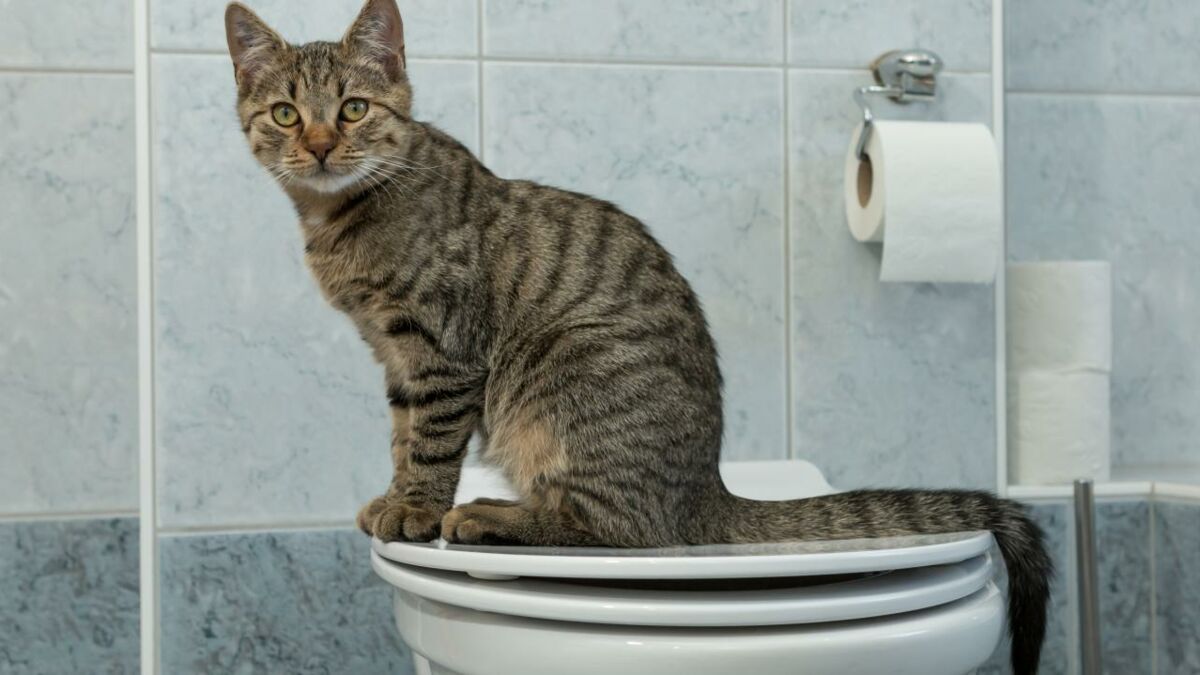Prevent Plumbing Problems: Don't Flush Cat Poop Down Your Toilet - Professional Advice
Prevent Plumbing Problems: Don't Flush Cat Poop Down Your Toilet - Professional Advice
Blog Article
The article author is making a number of great pointers on How to Dispose of Cat Poop and Litter Without Plastic Bags in general in this article on the next paragraphs.

Intro
As feline proprietors, it's vital to be mindful of exactly how we throw away our feline close friends' waste. While it might seem convenient to flush feline poop down the bathroom, this practice can have harmful consequences for both the setting and human health.
Environmental Impact
Flushing cat poop introduces dangerous virus and bloodsuckers right into the water supply, posing a significant threat to marine ecological communities. These impurities can adversely affect marine life and concession water top quality.
Health and wellness Risks
In addition to ecological worries, flushing cat waste can additionally position health threats to humans. Pet cat feces may contain Toxoplasma gondii, a bloodsucker that can cause toxoplasmosis-- a potentially extreme ailment, specifically for expectant females and people with weakened body immune systems.
Alternatives to Flushing
Luckily, there are safer and more liable means to dispose of pet cat poop. Think about the complying with choices:
1. Scoop and Dispose in Trash
The most usual technique of dealing with pet cat poop is to scoop it into a naturally degradable bag and toss it in the trash. Make sure to make use of a devoted trash inside story and deal with the waste immediately.
2. Usage Biodegradable Litter
Opt for biodegradable feline trash made from products such as corn or wheat. These clutters are eco-friendly and can be securely dealt with in the trash.
3. Bury in the Yard
If you have a yard, consider burying cat waste in a designated location far from veggie yards and water sources. Make sure to dig deep enough to prevent contamination of groundwater.
4. Mount a Pet Waste Disposal System
Buy a family pet waste disposal system specifically designed for pet cat waste. These systems utilize enzymes to break down the waste, reducing smell and ecological impact.
Final thought
Liable pet ownership prolongs past providing food and shelter-- it likewise includes correct waste monitoring. By refraining from flushing feline poop down the bathroom and selecting different disposal approaches, we can decrease our ecological impact and shield human health.
Why Can’t I Flush Cat Poop?
It Spreads a Parasite
Cats are frequently infected with a parasite called toxoplasma gondii. The parasite causes an infection called toxoplasmosis. It is usually harmless to cats. The parasite only uses cat poop as a host for its eggs. Otherwise, the cat’s immune system usually keeps the infection at low enough levels to maintain its own health. But it does not stop the develop of eggs. These eggs are tiny and surprisingly tough. They may survive for a year before they begin to grow. But that’s the problem.
Our wastewater system is not designed to deal with toxoplasmosis eggs. Instead, most eggs will flush from your toilet into sewers and wastewater management plants. After the sewage is treated for many other harmful things in it, it is typically released into local rivers, lakes, or oceans. Here, the toxoplasmosis eggs can find new hosts, including starfish, crabs, otters, and many other wildlife. For many, this is a significant risk to their health. Toxoplasmosis can also end up infecting water sources that are important for agriculture, which means our deer, pigs, and sheep can get infected too.
Is There Risk to Humans?
There can be a risk to human life from flushing cat poop down the toilet. If you do so, the parasites from your cat’s poop can end up in shellfish, game animals, or livestock. If this meat is then served raw or undercooked, the people who eat it can get sick.
In fact, according to the CDC, 40 million people in the United States are infected with toxoplasma gondii. They get it from exposure to infected seafood, or from some kind of cat poop contamination, like drinking from a stream that is contaminated or touching anything that has come into contact with cat poop. That includes just cleaning a cat litter box.
Most people who get infected with these parasites will not develop any symptoms. However, for pregnant women or for those with compromised immune systems, the parasite can cause severe health problems.
How to Handle Cat Poop
The best way to handle cat poop is actually to clean the box more often. The eggs that the parasite sheds will not become active until one to five days after the cat poops. That means that if you clean daily, you’re much less likely to come into direct contact with infectious eggs.
That said, always dispose of cat poop in the garbage and not down the toilet. Wash your hands before and after you clean the litter box, and bring the bag of poop right outside to your garbage bins.
https://trenchlesssolutionsusa.com/why-cant-i-flush-cat-poop/

As a person who reads on Can You Flush Cat Poo or Litter Down the Toilet?, I was thinking sharing that portion was sensible. Sharing is nice. Helping others is fun. Thank-you for your time invested reading it.
Call Today Report this page